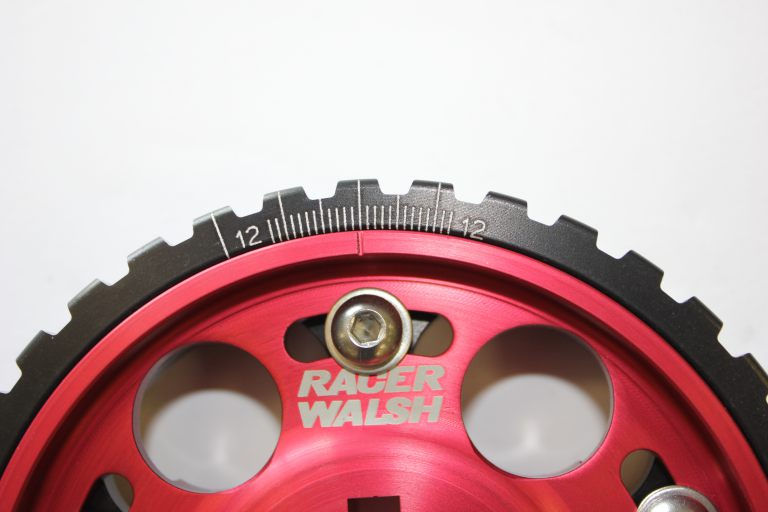It's the same 13.33° for both (720° ÷ 54 teeth = 360 ÷ 27 teeth) because of the cam turning 1/2 speed with twice as many teeth. I'm sure this is a good compromise of maximum error vs. smaller teeth (weaker) but it makes corrections by skipping a tooth an "extreme only method".
Here's a Ford 2.3 liter L4 with a cam drive using a face plate using bolts in slots (Racer Walsh product) securing the hub to the pulley which are simply tightened when the cam is properly phased, works at 8,000 RPM, but having pin positions would make it easier to tweak by using the stock Chevy marks, then identify how much change you need by pin position (viz., -4°, 0°, +4°, etc.) since any large change could begin with the 13.33° skip tooth method. Each pin position would be relevant to a specific tooth on the cam gear, of course.


